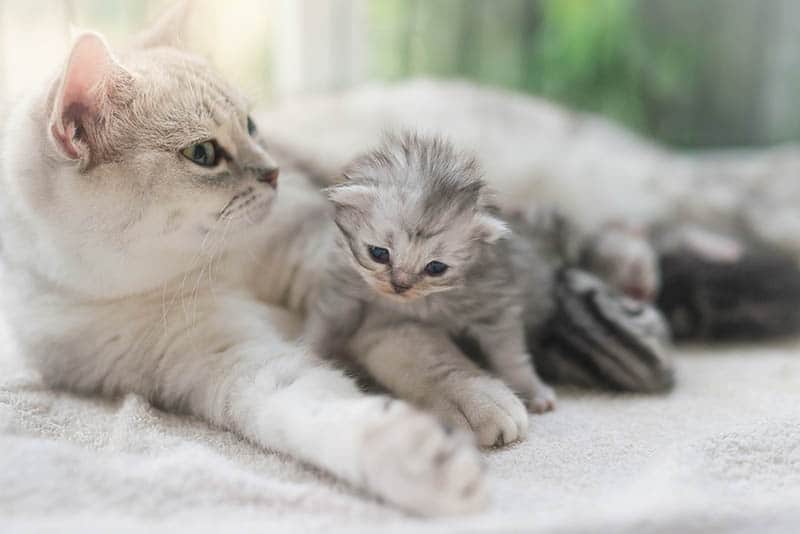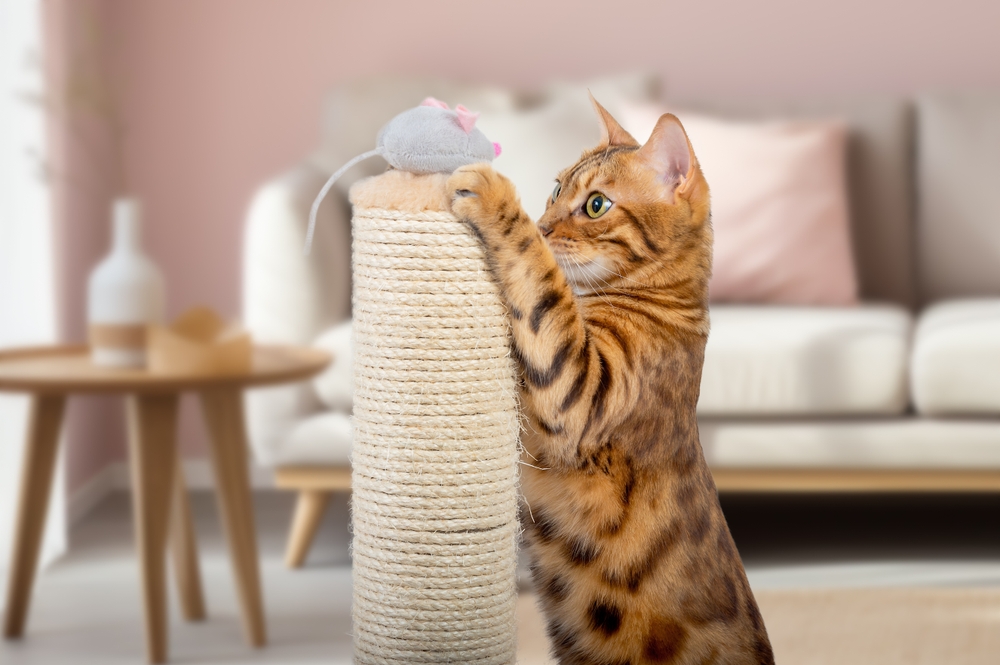When choosing a cat as a pet, understanding the differences between male and female cats can be beneficial, as one might be more suited to your household than the other. Keep reading as we discuss size, temperament, training, health, and breeding to help you understand both sexes better so you can make an informed choice about what is right for your home.
Visual Differences

At a Glance
- Average height (adult): 8–10 inches
- Average weight (adult): 6–12 pounds
- Average height (adult): 8–10 inches
- Average weight (adult): 6–12 pounds
Cats 101
Cats are among the most popular and beloved pets worldwide, behind only dogs as most people’s favorites, and they have been keeping us company for thousands of years. They are graceful, independent, and playful, often entertaining everyone in the home. They form strong bonds with their family and will even get rid of all kinds of pests, from mice to flies. They are available in various colors, patterns, and sizes, and you can get them with long, short, or no hair. They require little maintenance and tend to live 12 or more years.


Male Cat Overview
Personality / Character
Cats all have unique personalities, and no two cats will be the same. That said, one prominent trait of male cats is their tendency to be more territorial than females. Unneutered males, in particular, may exhibit behaviors like urine marking, scratching, and defending their territory. Male cats are playful and have abundant energy, so they enjoy interactive playtime with their owners and will love chasing after balls and laser lights. They are also affectionate and usually stay within a few feet of their owners throughout the day.

Training
While cats can’t learn as many commands as dogs, you can still teach them to come when called, use the litter box, and a few other tricks. Males tend to be more playful and relaxed than females, which can make them more open to learning, and they will often be able to remember how to solve puzzles to get treats and how to play many of the games that they enjoy. You can also teach them to use a scratching pole instead of the furniture, use the toilet instead of the litter box, and do other simple tricks by starting while they are still a kitten and remaining patient and consistent.
Health & Care
Neutering your male cat is an essential step in their health and care. Neutering helps prevent unwanted behaviors like spraying, roaming, and aggression and reduces the risk of certain reproductive health issues, such as testicular cancer and prostate problems. Your male cat will also need regular veterinary checkups and vaccinations to stay healthy and detect problems early. You will need to manually brush your cat’s teeth as frequently as possible with a cat-specific toothpaste, trim their nails if they get too long, and check their ears regularly for signs of mites or infection, especially if they spend time outside.

Breeding
Breeding male cats should be approached with careful consideration and responsible practices. Consider your male cat’s health, temperament, and genetic background before breeding. Aim for the breed’s improvement and avoid overpopulation by testing the cat for genetic diseases and underlying health conditions. If you are planning to breed your male cat, consider working with a reputable breeder or seeking guidance from them. Some breeders offer stud services, where you can bring your male cat to mate with a selected female cat from another breeder.
- Slightly larger than females
- More affectionate
- Calm
- More aggressive toward other cats
- Territorial marking
Female Cat Overview
Personality / Character
Like male cats, female cats have unique personalities, and no two will be the same. However, female cats are more nurturing and usually more accepting of other animals, especially new additions. They also tend to be more independent than males and may spend most of their time in another part of the house. They can be strong-willed and more assertive with family members and other pets and often vocalize to get their point across. They are less territorial than males and won’t wander off looking for females, but they might argue with other female cats with a strong will.

Training
Female cats are just as smart as males and can learn the same tricks, but since they are often more strong-willed and independent, it can take longer. Plenty of positive reinforcement, including treats and extra petting, can help speed up the process. Holding short training sessions at the same time each day can also help get them into a routine that helps keep them focused so they learn more quickly.
Health & Care
Spaying your female helps prevent unwanted pregnancies and eliminates the risk of certain reproductive health issues like uterine infections and mammary tumors. It also helps reduce behaviors associated with heat cycles, such as yowling and spraying. Like with male cats, female cats need regular checkups to ensure that they are healthy and up to date on their vaccinations. Teeth cleaning, nail clipping, and ear maintenance are also important.

Breeding
Like with male cats, breeding female cats requires careful consideration. Ensure that your cat is the appropriate age and healthy enough to get pregnant, and provide a safe and clean environment for the mating and birthing process. If successful mating occurs, provide proper care and nutrition for your pregnant cat. Monitor her closely during the pregnancy, and consult with your veterinarian for guidance on appropriate diet, exercise, and prenatal care. Educate yourself about the signs of labor, and be prepared to assist during the birthing process if necessary.
- Independent
- Less territorial
- Prefer to stay home
- More vocal
- Might argue with other females
Which Sex Is Right for You?
All cats make wonderful pets, and there is little difference between the males and females, especially when you look at each cat’s personality. In general, males tend to be slightly more affectionate and will stay close to their owners when they are indoor cats, but they can stray away from home looking for females if they go outside. Males can also be more aggressive toward other animals. Females are more independent, so you will spend more time wondering where they are, but they like to stay home even if you don’t get them spayed. However, they can be strong-willed and vocal, especially when they want attention.
See also:
Featured Image Credit: (L) Katelyn Greer, Unsplash | (R) Jack Blueberry, Unsplash













